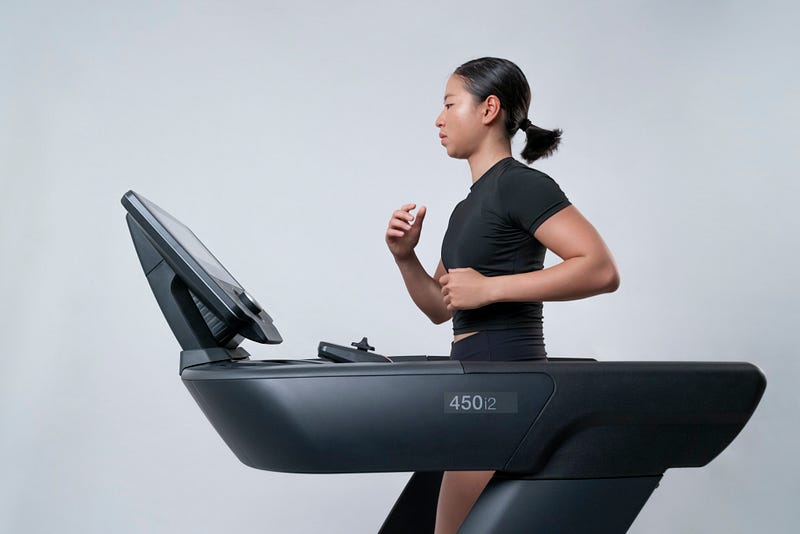Are Treadmills a Poor Substitute for Outdoor Running?
Written on
The Case Against Exclusive Treadmill Use
Treadmills have become a popular choice for runners for various reasons, including safety, weather conditions, and convenience. However, can they fully replace the experience of running outdoors? From a physiological and biomechanical standpoint, relying solely on a treadmill may not be the best approach, though this may vary for each individual.
Understanding the Drawbacks of Indoor Running
Before we delve deeper, it's important to note that this discussion is aimed at runners seeking to enhance their health and performance. If your goal is simply to elevate your heart rate and maintain basic cardiovascular fitness, feel free to enjoy the treadmill. However, if you’re aiming for marathon training or personal records, the surface on which you run warrants careful consideration.
As always, individual circumstances differ, and there are scenarios where treadmill running is advisable for health and safety. If you have a history of injuries or chronic conditions that necessitate specific training adjustments, consult a healthcare professional to tailor a suitable regimen.
From a performance and longevity standpoint, there are several reasons why treadmills should not be your exclusive training method. To clarify, I’ll outline three main points. Keep in mind that these insights should be tailored to your unique training needs.
1) Impact on Running Economy and Joint Health
One significant difference between running on a treadmill and outdoors is the way you propel yourself. With the treadmill moving beneath you, your musculoskeletal system engages differently. The absence of varied terrain, elevation changes, and turns can lead to weaknesses in stabilizing muscles around the feet, ankles, knees, and hips. Although curved treadmills may help somewhat, they cannot replicate outdoor conditions.
While this may seem minor, over time, these differences accumulate. If you exclusively train on a treadmill and then compete in a road race, you might experience heightened perceived effort, muscle soreness, and an increased risk of injury both during and after the event. Additionally, you may develop poor habits in your foot strike or take-off phases since you're not fully engaging in the natural gait cycle.
2) Insufficient Race-Day Preparation
Another often-overlooked downside of treadmill training is the lack of pacing and self-regulation. It's easy to set a pace and zone out, which won't be an option on race day when you must constantly monitor your body's signals and surroundings, as well as maintain your speed.
While occasional treadmill workouts can be beneficial (as evidenced by elite runners like the Ingebrigtsens), relying too heavily on them can leave you physically and mentally unprepared for the specific demands of race day. Developing the ability to gauge your effort without relying on technology is vital for effective pacing and achieving optimal results.
3) Practical Limitations and Motivation Issues
This final point is more about practicality. If you don’t have a treadmill at home, finding an available one at the gym can be a challenge, especially for longer runs. Many fitness centers have a limited number of machines, which may restrict your workout time to as little as 30 minutes—insufficient for most training sessions.
Furthermore, the monotonous nature of indoor running can negatively impact motivation over time. While training doesn't always have to be exhilarating, incorporating variety in your routes, surfaces, and training partners can enhance enjoyment and satisfaction. The repetitive nature of treadmill workouts can make running feel burdensome, potentially leading to burnout.
For those logging high mileage weekly, it’s crucial to incorporate enough diversity to keep your spirits high and your body in good condition. Long-term, you’ll be grateful for this approach!
When to Opt for Treadmill Running
Despite its limitations, the treadmill remains a valuable tool for various scenarios. Here are a few situations where treadmill training can be beneficial:
- When prescribed by a healthcare professional for controlled workouts.
- For maintaining a consistent pace during tempo or threshold runs.
- If you live in an area with extreme weather conditions that make outdoor running hazardous.
- For easy or recovery runs without elevation changes.
- When you need a mental break from outdoor running.

Final Thoughts
While treadmills have their place in a runner’s training plan, they should not be seen as a complete substitute for outdoor running. Given their limitations concerning running economy, race-day preparedness, and motivational challenges, consider them just one tool among many in your training arsenal. If your goal is to maximize your running potential and achieve personal bests, it’s time to lace up your shoes and head outside. You won’t regret it!
You've got this.
-David Liira.Kin